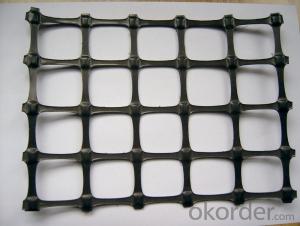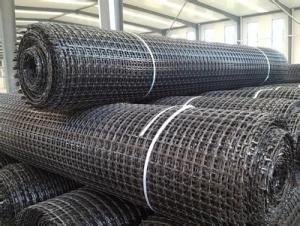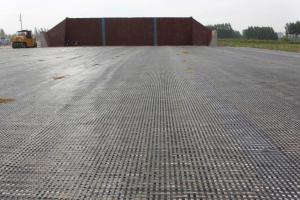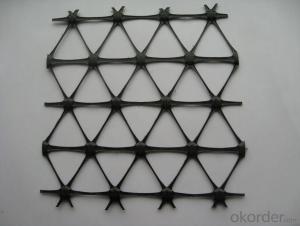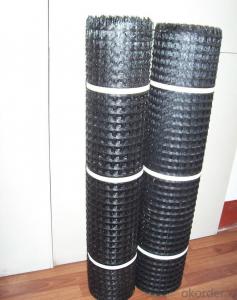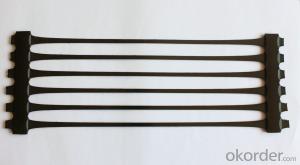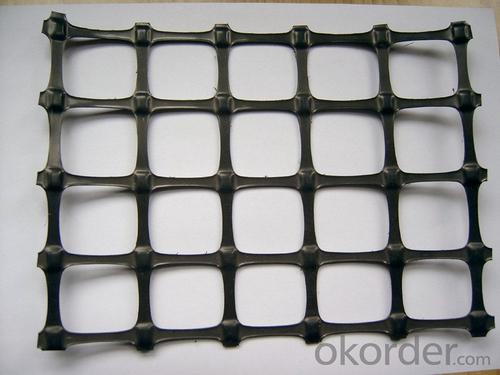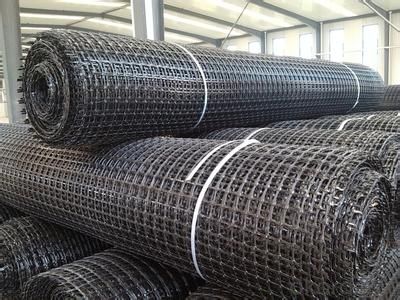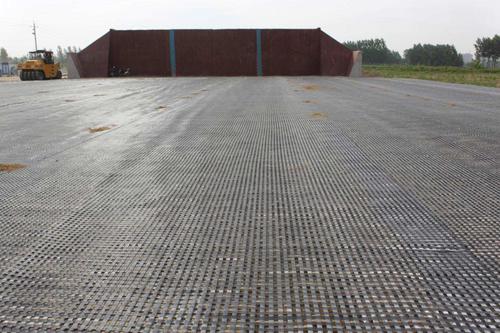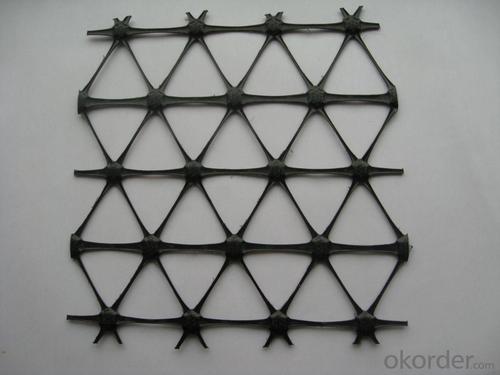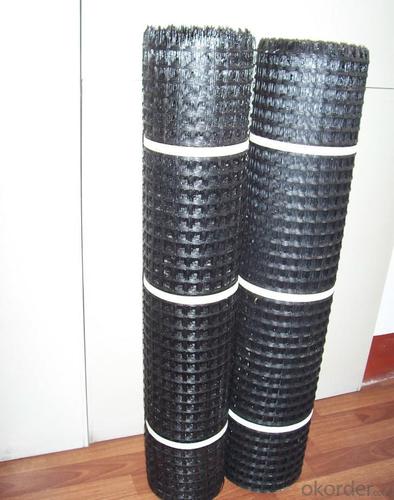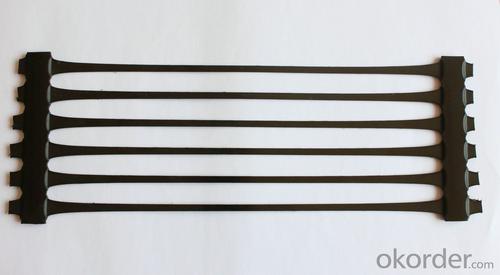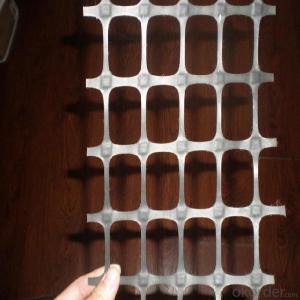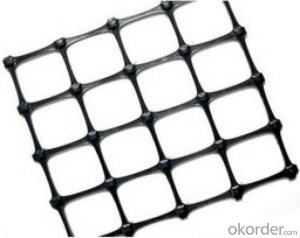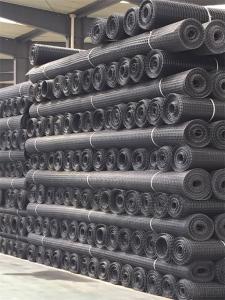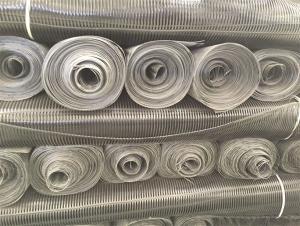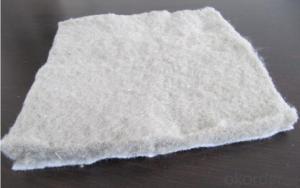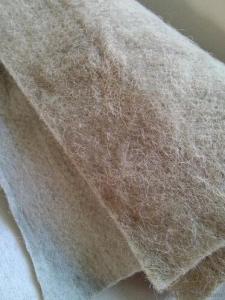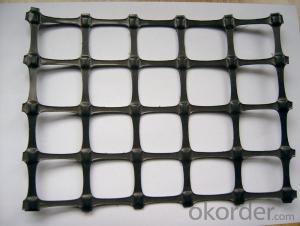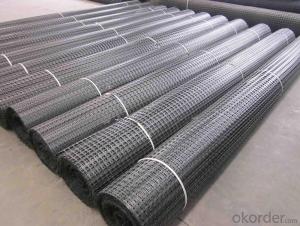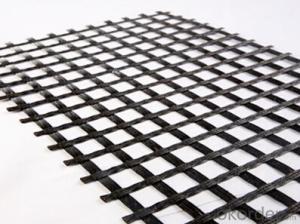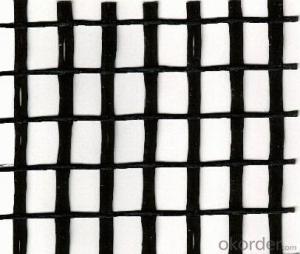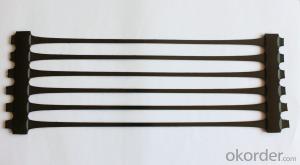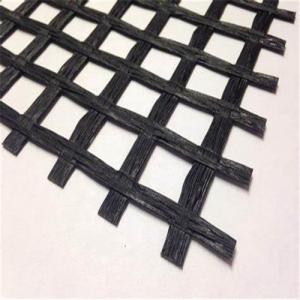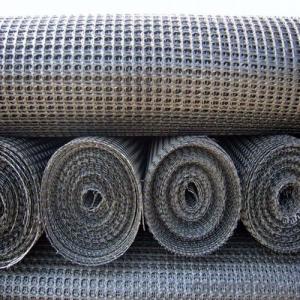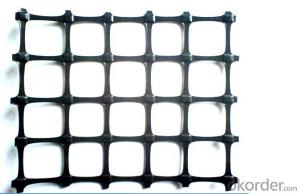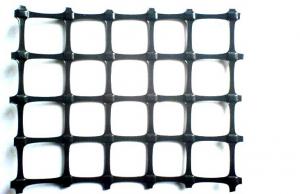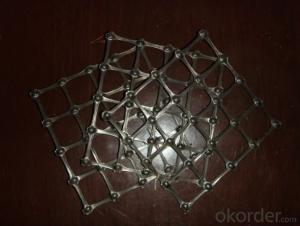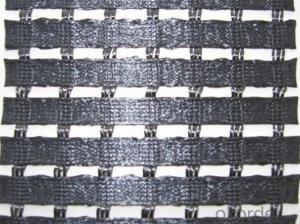Uniaxial Fiberglass Earthwork Base Material Geogrid
- Loading Port:
- Shanghai
- Payment Terms:
- TT OR LC
- Min Order Qty:
- 50000 m²
- Supply Capability:
- 200000 m²/month
OKorder Service Pledge
OKorder Financial Service
You Might Also Like
Fiberglass Earthwork Base Material Geogrid
Description Of Fiberglass Earthwork Base Material Geogrid:
Fiberglass geogrid is a kind of new favorable earthwork base material to strengthen the road surface and roadbed.This product is made by weaving and covering fiberglass filament. It is featured by high vertical and horizontal tensile strength,low unit extension, high flexibility, and favorable high and low temperature resistance.The products after surface covering own the favorable property of alkali resistance and aging resistance. It is used widely to increase the asphalt road surface, concrete road and roadbed (both soft and hard road surfaces).Compared with the traditional road surface, it reduces the cost, prolong the service life, and avoid the reflection road crackle.This product is also used to strengthen the soft land, such as railway, airport, irrigation work, and dyke, etc, and the roadbed.
Main Features of Fiberglass Earthwork Base Material Geogrid:
(1)High tensile strength in both the vertical and horizontal directions;
(2)Low elongation;
(3)Excellent temperature ;
(4)Good anti-age and alkali-resistance;
(5)Reduce construction cost, extend service life of road and prevent deflection cracks.
This product is formed by weaving and covered with aphalt or PVC.
Specifications of Fiberglass Earthwork Base Material Geogrid:
Tensile Strength (KN) | Warp | >30 | >50 | >60 | >80 | >100 | >120 | >150 | >200 |
Weft | >30 | >50 | >60 | >80 | >100 | >120 | >150 | >120 | |
Elongation(%) | <4< p=""> | <4< p=""> | <4< p=""> | <4< p=""> | <4< p=""> | <4< p=""> | <4< p=""> | <4< p=""> | |
Mesh Size(mm) | 25.4*25.4 | 25.4*25.4 | 25.4*25.4 | 25.4*25.4 | 25.4*25.4 | 25.4*25.4 | 25.4*25.4 | 25.4*25.4 | |
Elastic Modulus | 76 | 76 | 76 | 76 | 76 | 76 | 76 | 76 | |
Width(m) | 1~6 | 1~6 | 1~6 | 1~6 | 1~6 | 1~6 | 1~6 | 1~6 | |
Length(m) | 50~300 | 50~300 | 50~300 | 50~300 | 50~300 | 50~300 | 50~300 | 50~300 | |
Temperature Resistant(℃) | -100~280 | -100~280 | -100~280 | -100~280 | -100~280 | -100~280 | -100~280 | -100~280 | |
Resin Content (%) | 18~20 | 18~20 | 18~20 | 18~20 | 18~20 | 18~20 | 18~20 | 18~20 | |
Glue Type | Bitumen PVC SBR soakage | Bitumen PVC SBR soakage | Bitumen PVC SBR soakage | Bitumen PVC SBR soakage | Bitumen PVC SBR soakage | Bitumen PVC SBR soakage | Bitumen PVC SBR soakage | Bitumen PVC SBR soakage | |
Applications of Fiberglass Earthwork Base Material Geogrid:
1.It reinforced old asphalt concrete road surface and asphalt surface layer ,and prevents damage
2.It is used for rebuilding cement concrete road surface into composite road surface and restraining reflection caused by block contraction
3.It is used inroad expansion and improvement project and crack by old and new combination position and uneven sedimentation
4.It is used in soft soil base reinforcement treatment ,is favorable for soft soil water separation and concretion ,restrains sedimentation effectively ,distributes stress uniformly and improve overall strength of road base
5.It is used for preventing contraction crack caused by new road semi-rigid base layer , and reinforcing and preventing road
surface crack caused by foundation crack reflection .

IMages of Fiberglass Earthwork Base Material Geogrid:
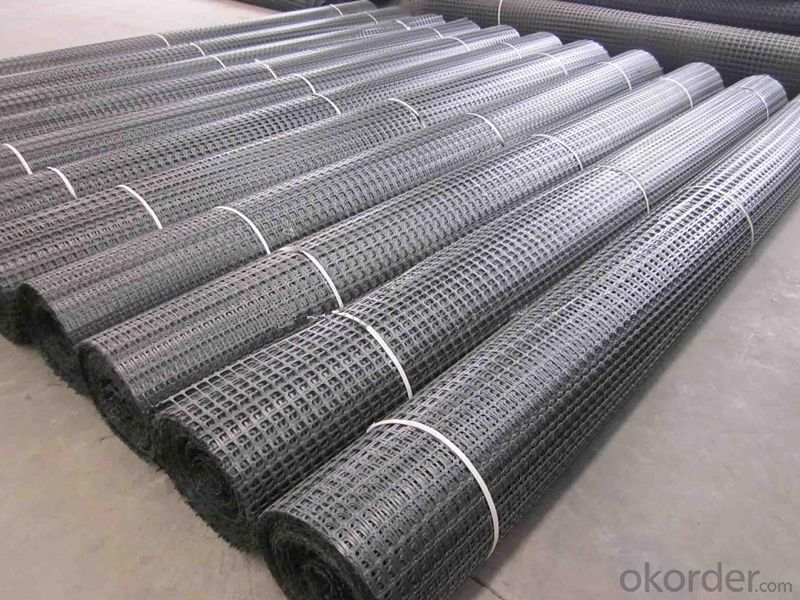
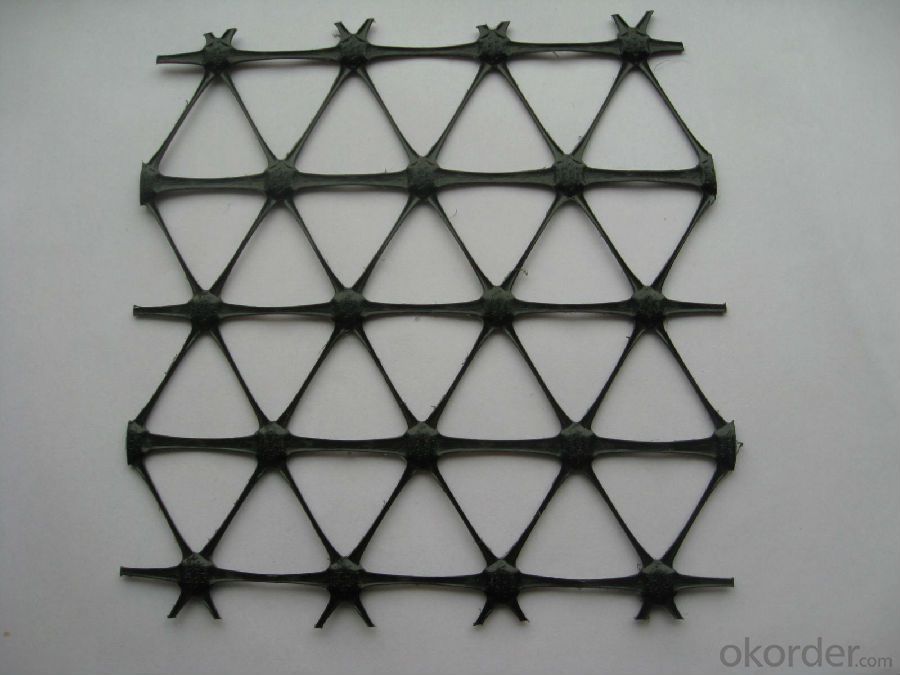
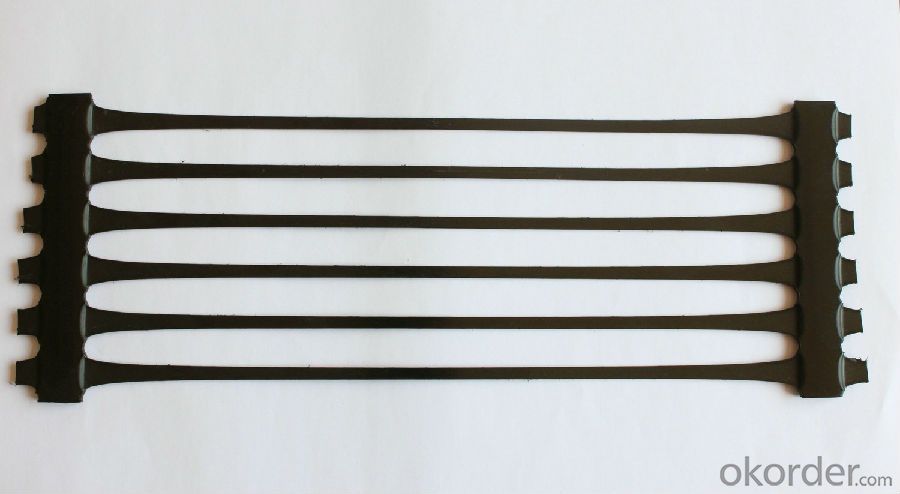

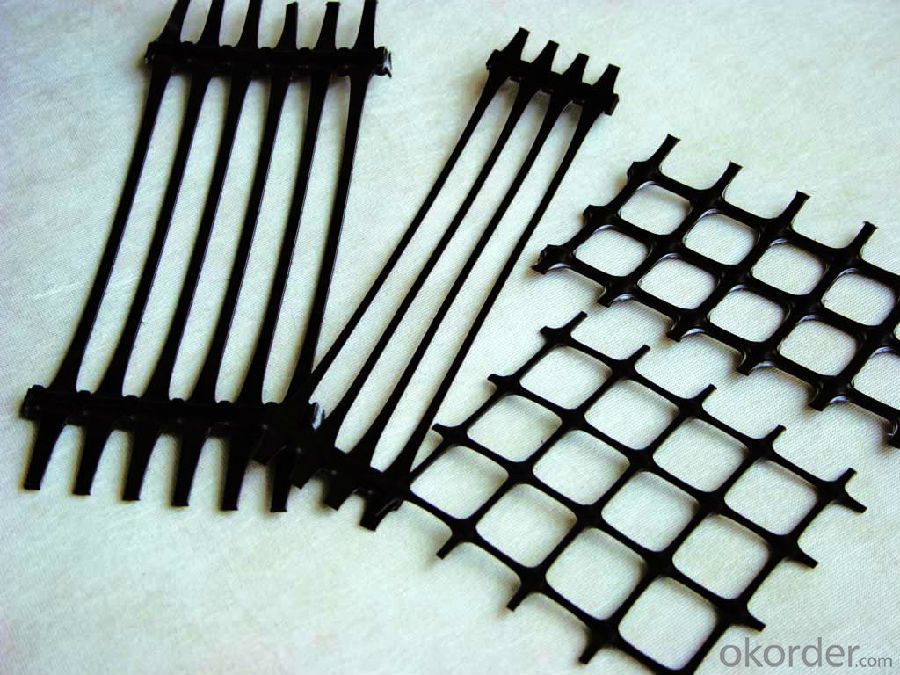
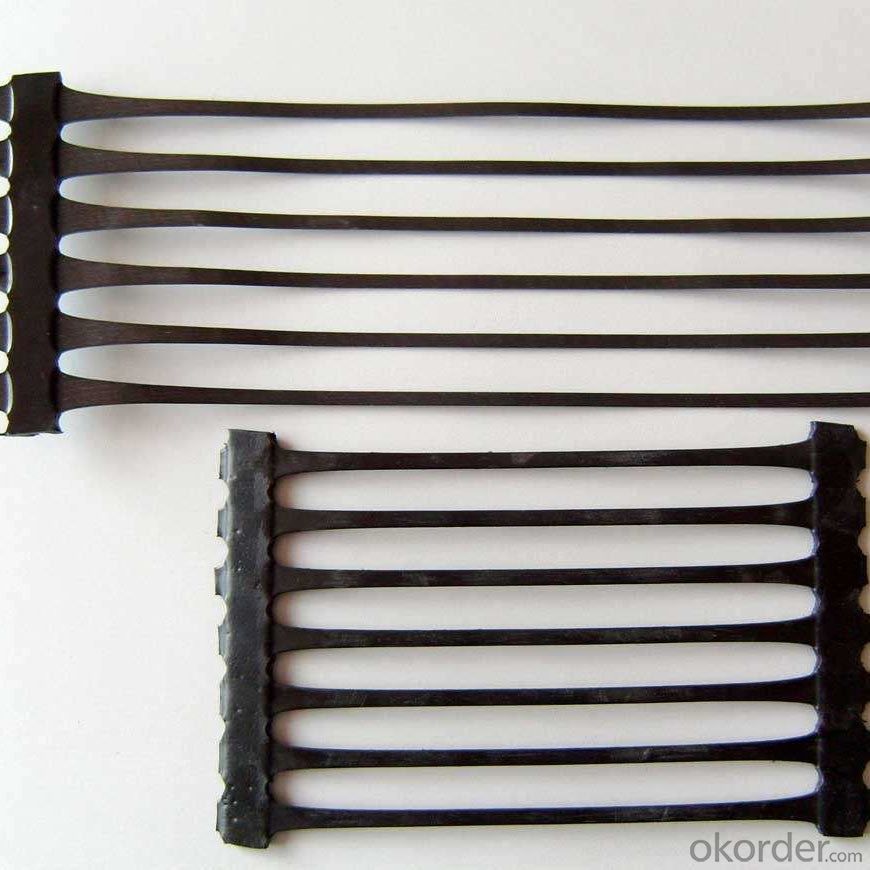
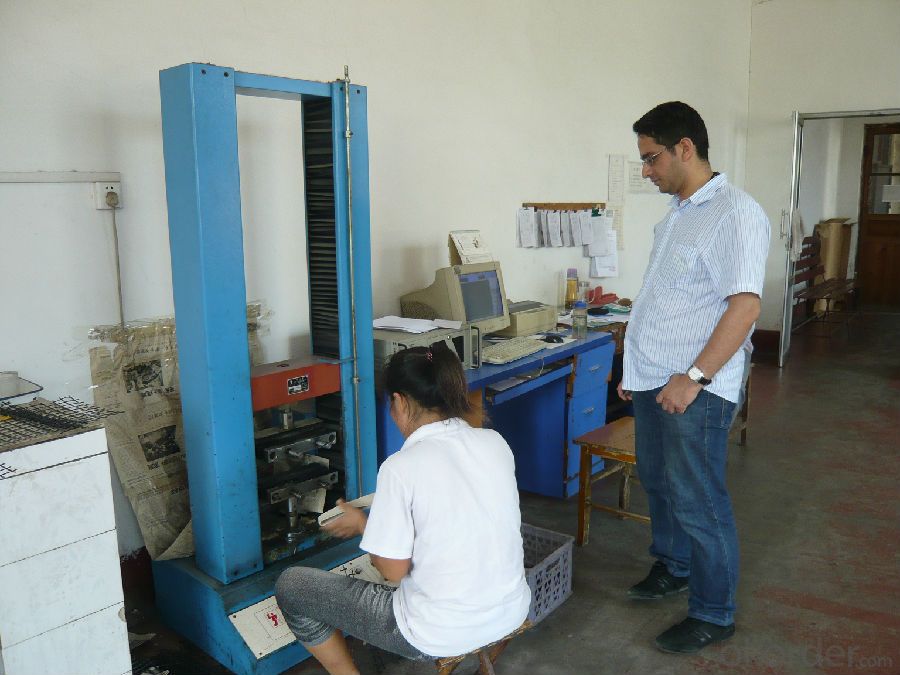
FAQ of Fiberglass Earthwork Base Material Geogrid:
1. What are we supplying?
We are specialized in producing Geosynthetic materials, like Geogrid Series, HDPE Geocell, Geonet, Geotextile, Geomat, Tri Denmensional Composite Grainage Geonet, and Geomembrane Series.
.
2. How Many years experience do we have?
We have been exported to more than 20 countries in the past 15 years.
3. How long do we usually reply your request?
We always reply our customer within 24 hours.
- Q: What is the difference between woven and non-woven geogrids?
- The main difference between woven and non-woven geogrids lies in their construction and composition. Woven geogrids are made by weaving tensile elements together, forming a grid-like structure. On the other hand, non-woven geogrids are created by bonding or needle-punching fibers together to form a random arrangement. Woven geogrids are typically stronger and have higher tensile strength due to their interlocking design. They are commonly used in applications that require high load-bearing capacity, such as stabilizing soil for road construction or reinforcing retaining walls. Non-woven geogrids, although less strong, offer excellent filtration and separation properties, making them suitable for erosion control, drainage systems, and preventing soil migration. In summary, woven geogrids are stronger and ideal for heavy-duty applications, while non-woven geogrids excel in filtration and separation tasks. The choice between the two depends on the specific needs of the project and the desired performance characteristics.
- Q: Can geogrids be used in reinforcement of geosynthetic clay liners?
- Yes, geogrids can be used in the reinforcement of geosynthetic clay liners. Geogrids are commonly used to enhance the tensile strength and stability of geosynthetic clay liners, thereby improving their performance in various applications such as landfill liners, pond liners, and slope stabilization. The geogrids are typically placed between layers of geosynthetic clay liners to provide additional reinforcement and prevent potential failure modes such as lateral sliding and slope instability.
- Q: Construction method of glass fiber grid
- At present, the commonly used glass fiber geogrid has two kinds of self adhesive and no self adhesive. The adhesive tape can be directly laid on the flat base. The materials needed for nail fixation:I. 40 x 40 x 0.3 mm of fixed iron, the requirements of flat angleIi. 2 inch steel nails (high quality cement nails)
- Q: What is the coefficient of friction of Nonwoven Geotextiles (polypropylene)?
- Generally, geomembrane is used in Seepage Control Engineering
- Q: What are the general laying methods of Geogrid
- Along the longitudinal laying, U nail fixed joint part, 15 cm, with tie rods or connection
- Q: How do geogrids help in reducing soil compaction?
- Geogrids help in reducing soil compaction by distributing the load from traffic or construction equipment more evenly across the soil surface. This helps to minimize the concentration of pressure on specific areas, preventing excessive compaction and allowing for better soil structure and drainage.
- Q: What are the long-term maintenance requirements for geogrids?
- The long-term maintenance requirements for geogrids are typically minimal. Once installed properly, geogrids generally do not require any specific maintenance. However, regular inspections are recommended to ensure that the geogrids are functioning as intended and to identify any potential damage or deterioration. In case any issues are detected, prompt repairs or replacements should be carried out to maintain the effectiveness of the geogrids over time.
- Q: Can geogrids be used in soil stabilization for parking lots?
- Yes, geogrids can be used in soil stabilization for parking lots. Geogrids are commonly used to reinforce and strengthen soil, preventing its movement and improving load-bearing capacity. By installing geogrids, parking lots can resist deformation and withstand heavy traffic, ensuring long-term stability and durability.
- Q: GDZ150 type one-way steel plastic welding geogrid D in the construction of the roadbed is horizontal paving also vertical spread?
- Of course it is perpendicular to the direction of the route
- Q: Are geogrids effective in preventing soil erosion on slopes without vegetation?
- Yes, geogrids are effective in preventing soil erosion on slopes without vegetation. Geogrids provide reinforcement to the soil, increasing its stability and preventing it from being washed away by water or eroded by wind. They act as a barrier, retaining the soil in place and reducing the risk of erosion, even in the absence of vegetation.
Send your message to us
Uniaxial Fiberglass Earthwork Base Material Geogrid
- Loading Port:
- Shanghai
- Payment Terms:
- TT OR LC
- Min Order Qty:
- 50000 m²
- Supply Capability:
- 200000 m²/month
OKorder Service Pledge
OKorder Financial Service
Similar products
Hot products
Hot Searches
Related keywords
